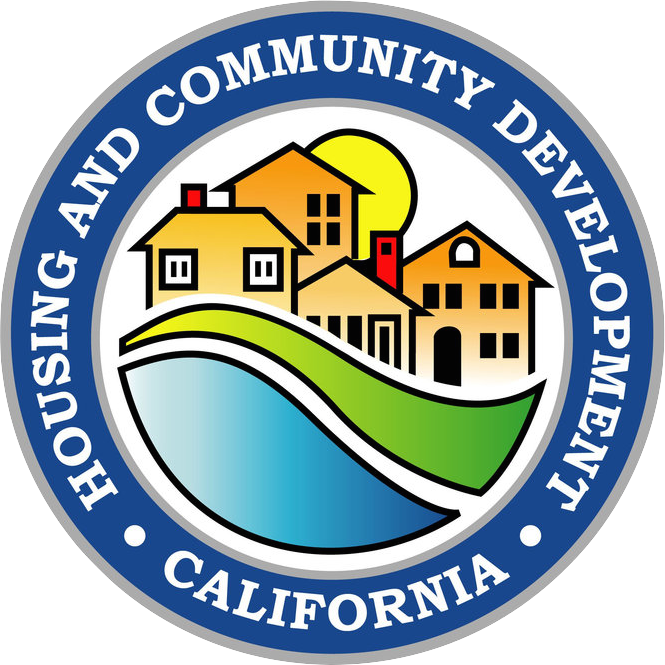Program Overview and Quantified Objectives
The element shall contain a program which sets forth a schedule of actions the local governments is undertaking or intends to undertake to implement the policies and achieve the goals and objectives of the housing element through the administration of land use and development controls, provision of regulatory concessions and incentives, and the utilization of appropriate federal and state financing and subsidy programs when available Government Code Section 65583(c).

The element shall include a statement of the community’s goals, quantified objectives and policies relative to the maintenance, preservation, improvement and development of housing, (Government Code Section 65583(b)).
Developing Effective Programs
Each jurisdiction must identify specific programs in its housing element that will allow it to implement the stated policies and achieve the stated goals and objectives. Programs must include specific action steps the locality will take to implement its policies and achieve its goals and objectives. Programs must also include a specific timeframe for implementation, identify the agencies or officials responsible for implementation, describe the jurisdiction’s specific role in implementation, and (whenever possible) identify specific, measurable outcomes.
Programs should reflect the results and analyses of the jurisdiction’s local housing needs, available land and financial resources, and the mitigation of identified governmental and non-governmental constraints. For example, if the analysis of the existing housing stock identified a high percentage of units in need of rehabilitation, the jurisdiction should include a rehabilitation program to meet the identified need. Similarly, if the city/county has identified constraints related to local regulations, the element should identify specific programmatic actions, such as streamlining processing requirements, providing pre-application consultation, or developing pre-approved prototypes to simplify the approval process.
Requisite Program Components
To make adequate provision for the housing needs of people all income levels, a jurisdiction must, at a minimum, identify programs that do all of the following:
- Identify adequate sites, with appropriate zoning and development standards and services to accommodate the locality’s share of the regional housing needs for each income level
- Assist in the development of adequate housing to meet the needs of extremely low-, very low-, low-, and moderate-income households.
- Address and, where possible, remove governmental constraints to the maintenance, improvement, and development of housing, including housing for people at all income levels, as well as housing for people with disabilities.
- Conserve and improve the condition of the existing affordable-housing stock.
- Preserve assisted housing developments at-risk of conversion to market-rate.
- Promote equal housing opportunities for all people, regardless of race, religion, sex, marital status, ancestry, national origin, color, familial status, or disability.
Effective programs include the following:
- Definite time frames for implementation (e.g. annually during the planning period, upon adoption of general plan amendment, by June 2020, etc.).
- Identification of agencies and officials responsible for implementation (e.g., planning department, county community development department, city building official, housing manager, public housing authority, etc.).
- Description of the local government’s specific role in program implementation (e.g. a description of how the city will market the availability of rehabilitation funds).
- Description of the specific action steps to implement the program.
- Proposed measurable outcomes (e.g., the number of units created, completion of a study, development of a homeless shelter, initiation of a rezone program, preservation of at-risk units, etc.).
- Demonstration of a firm commitment to implement the program (e.g., the city will apply for HOME funds by June 2009).
- Identification of specific funding sources, where appropriate (e.g., dollar amounts of annual funding entitlements or allocations — Community Development Block Grants; Emergency Solutions Grants; Housing Opportunities for Persons with AIDS; continuum of care; redevelopment successor agency’s low- to moderate-income housing funds; bond proceeds; tax credit allocations; and other federal, state and local resources).
Quantified Objectives
After the jurisdiction identifies housing needs, surveys land and financial resources, analyzes constraints, and develops appropriate programmatic and policy responses that reflect the community’s unique needs and circumstances, it then sets quantified objectives.
Requisite Analysis
The quantified objectives should estimate the number of units likely to be constructed, rehabilitated, or conserved/preserved by income level during the planning period. The quantified objectives do not represent a ceiling on development, but rather set a target goal for the jurisdiction to achieve, based on needs, resources, and constraints.
Ideally, construction objectives will be equal to identified needs. However, when a locality has determined total housing needs exceed the locality’s ability to meet those needs with existing resources, the quantified objectives may be less than the total identified need as specified in the locality’s regional housing need allocation. Under these circumstances, localities may target limited resources to areas of greatest need (based on the analysis completed). The housing element, however, must describe the analysis used to establish the quantified objectives.
Emphasizing a particular objective, however, may result in reducing another. For example, in urban areas with a shortage of land, programs to maximize housing preservation may be the priority even though this may limit opportunities for the development of new housing.
In growing communities, the development of housing affordable for future residents may use Community Development Block Grants or HOME funds for land write-downs to facilitate new construction rather than for rehabilitation loans.
Each quantified objective should be detailed by income level as illustrated in the following table:
| Income Category | New Construction | Rehabilitation | Conservation/ Preservation |
|---|---|---|---|
| Extremely Low | |||
| Very Low | |||
| Low | |||
| Moderate | |||
| Above Moderate | |||
| TOTALS |
Note: The locality may choose to establish quantified objectives by tenure (i.e. rental or ownership) and/or type of household to be benefited (e.g. people with disabilities).
- The “New Construction” objective (in the table above) refers to the number of new units that potentially could be constructed using public and/or private sources over the planning period, given the locality’s land resources, constraints, and proposed programs.
- The “Rehabilitation” objective refers to the number of existing units expected to rehabilitated during the planning period.
- The “Conservation/Preservation” objective refers to the preservation of the existing affordable housing stock throughout the planning period. To determine the number of units to be conserved, a locality could, for example, quantify the number of existing housing units that will be preserved through the provision of more stable zoning for mobilehome parks or other affordable housing types.

